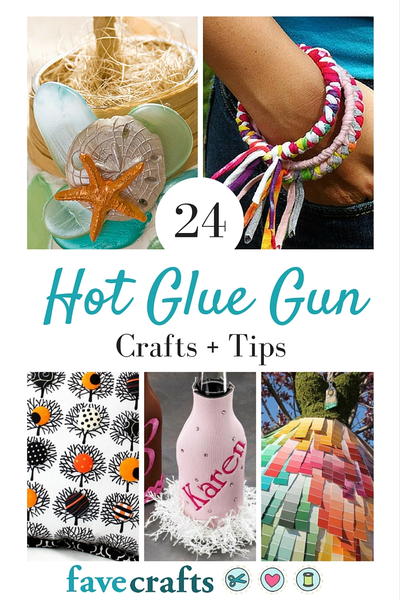There are three main types of hot glue: low-temperature, high-temperature, and all-temperature. Low-temperature hot glues are best for delicate materials.
Hot glue is a versatile adhesive that finds use in various DIY projects, crafting, and repairs. Known for its strong bond and quick setting time, hot glue comes in different types to suit specific needs. Low-temperature hot glue guns are ideal for projects involving heat-sensitive materials like fabric or foam.
On the other hand, high-temperature hot glue guns provide a stronger bond suitable for heavier materials like wood or metal. For versatility, all-temperature hot glue guns allow for use on a wide range of materials. Understanding the types of hot glue available can help you choose the best adhesive for your project.

Credit: www.amazon.com
Different Types Of Hot Glue
Hot glue is a versatile adhesive used for a variety of crafting, DIY, and repair projects. Understanding the different types of hot glue available can help you choose the right one for your specific needs.
Standard Hot Glue
- Most commonly used type of hot glue
- Adheres well to a wide range of materials
- Good for general crafting and light-duty repairs
Low Temp Hot Glue
- Operates at lower temperatures
- Safer to use on delicate materials like foam and fabric
- Not ideal for high-stress applications
High Temp Hot Glue
- Works at higher temperatures for stronger bonds
- Best for heavy-duty projects and materials like wood and metal
- Quick setting time and durable hold
Considerations For Crafting Projects
When selecting a hot glue for your crafting projects, it’s essential to consider the type that best suits your needs. Factors to consider include the temperature resistance, drying time, and bond strength of the glue. Different types of hot glue such as low temperature, high temperature, and multi-temperature can be chosen according to the specific requirements of the project.
Material Compatibility
– Consider the materials you will be adhering to determine the appropriate hot glue type.
– Different materials may require different adhesive strengths.
Precision And Control
– For intricate projects that demand accuracy, opt for a hot glue gun with a fine tip.
– Precision is essential when working on detailed craft pieces.
Strength And Durability
– Evaluate the intended use of your project to gauge the necessary strength of the hot glue.
– Durability is key for long-lasting craft creations.
Best Hot Glue Options For Various Projects
Hot glue is a go-to adhesive for various crafting and DIY projects because of its versatility and strong bond. Different types of hot glue are suitable for different materials and applications. Here are the best hot glue options for various projects, including paper and cardboard crafts, woodworking and fabric projects, and DIY home decor.
Paper And Cardboard Crafts
When working with paper and cardboard, it’s important to use a hot glue that provides a strong bond without causing any damage to the delicate materials. Look for a low-temperature hot glue gun and glue sticks specifically designed for paper and cardboard crafts. These hot glue options offer a gentler melt and bonding process, allowing precise application without the risk of warping or tearing the materials.
Woodworking and Fabric Projects
For woodworking and fabric projects, a high-temperature hot glue gun is essential to ensure a durable bond. When working with wood, opt for a woodworking-specific hot glue that can withstand the stress and strain of the material. Similarly, when dealing with fabrics, choose a fabric hot glue that can securely bond different types of fabrics without causing damage or stiffness. These hot glue options provide the strength and flexibility needed for woodworking and fabric projects.
DIY Home Decor
DIY home decor projects often involve a combination of materials, such as glass, wood, and metal. For these versatile projects, a multi-temperature hot glue gun is ideal. This type of hot glue gun allows you to adjust the temperature based on the materials being bonded, offering the flexibility to work with various surfaces. When selecting hot glue options for DIY home decor, consider multi-temperature glue sticks that can accommodate different material combinations.

Credit: www.craftsy.com
Application Techniques And Tips
Discover the best types of hot glue for your application needs with these helpful tips and techniques. Learn how to choose the right hot glue based on your project requirements and get the best results every time. Master the art of using hot glue effectively with expert advice.
Hot glue is a versatile adhesive that can be used for a wide range of applications. Knowing the right techniques and tips for applying hot glue can greatly improve the outcome of your projects. In this section, we’ll discuss some important aspects to consider, including surface preparation and how to avoid common pitfalls. By following these guidelines, you can ensure a successful and long-lasting bond.
Surface Preparation
Before applying hot glue, it’s important to prepare the surface properly to ensure optimal adhesion. Follow these steps:
1. Clean the surface: Remove any dust, dirt, or grease from the surface using a clean cloth or a mild detergent. This will help the hot glue adhere better.
2. Dry the surface: Ensure that the surface is completely dry before applying hot glue. Moisture can affect the bonding process and weaken the adhesive’s strength.
3. Roughen the surface: For smoother surfaces like glass or plastic, lightly sanding the area can create a better grip. This step is particularly important when working with non-porous materials.
4. Preheat the glue gun: Allow the glue gun to preheat fully before applying the hot glue. This ensures that the glue flows smoothly and evenly.
Avoiding Common Pitfalls
When using hot glue, it’s essential to be aware of common pitfalls to achieve the best results. Here are some tips to consider:
1. Use the right amount: Avoid using an excessive amount of hot glue, as it can lead to messy results and potential damage to your project. Apply the glue in small dots or thin lines for better control and less wastage.
2. Work quickly: Hot glue dries fast, so it’s important to work swiftly to ensure a strong bond. Have your materials ready and position them correctly before applying the glue.
3. Beware of heat: Hot glue is, well, hot! Take caution not to burn yourself during application. Use tools like tweezers or popsicle sticks to hold the glue or press down on materials.
4. Test on a small area first: If you’re unsure how hot glue will react with a specific material, do a test on a small, inconspicuous area. This way, you can ensure compatibility and avoid any unwanted damage.
By following these application techniques and tips, you can make the most out of hot glue for your creative projects. Whether you’re working on crafts, DIY projects, or repairs, these guidelines will help you achieve a strong and professional-looking bond. Remember, proper surface preparation and attentiveness to common pitfalls are key to the successful use of hot glue.
Safety Precautions When Working With Hot Glue
Hot glue guns are versatile and handy tools that are commonly used in various crafts and DIY projects. However, it’s important to prioritize safety when working with hot glue to prevent any accidents or injuries. By following a few simple safety precautions, you can ensure a safer and more enjoyable crafting experience.
Protective Gear
Wearing the right protective gear is crucial when using hot glue guns. Here are a few items you should consider:
- Heat-resistant gloves: Protect your hands from possible burns or heat-related injuries by wearing heat-resistant gloves while handling hot glue.
- Eye protection: Hot glue guns can sometimes release small splatters of glue that could accidentally come into contact with your eyes. So, it’s recommended to wear safety goggles or glasses to shield your eyes.
- Long-sleeved clothing: Wearing long-sleeved clothing can help prevent accidental burns on your arms or forearms. Opt for heavier fabrics that are less likely to absorb the heat.
Proper Ventilation
When working with hot glue indoors, ensuring proper ventilation is essential to prevent the inhalation of any potentially harmful fumes. Here’s what you need to know:
- Work in a well-ventilated area: Choose a workspace with adequate airflow, such as near an open window or in a room with good ventilation.
- Avoid enclosed spaces: Never use hot glue guns in tight or enclosed spaces, as this can lead to a buildup of fumes.
- Use exhaust fans or air purifiers: If available, utilize exhaust fans or air purifiers to improve air circulation and filter out any fumes.
By following these safety precautions, you can minimize the risks associated with working with hot glue, allowing you to focus on your creative projects without worrying about potential hazards. Remember, safety should always be your top priority!

Credit: www.favecrafts.com
Frequently Asked Questions For Types Of Hot Glue
What Are The Different Types Of Hot Glue Available?
Hot glue comes in various types such as low-temperature, high-temperature, and dual-temp. Low-temperature glue is ideal for delicate materials like fabric and foam. High-temperature glue is suitable for tougher materials like wood and metal. Dual-temp glue can be used for both types of materials.
Can Hot Glue Be Used On Plastics?
Yes, hot glue can be used on most plastics. However, it’s essential to choose the right type of hot glue that is compatible with the specific plastic material you are working with. Always check the product label or consult the manufacturer’s instructions for the best results.
How Long Does It Take For Hot Glue To Dry?
The drying time of hot glue depends on various factors such as the type of glue, temperature, and humidity. Generally, hot glue can take anywhere from a few seconds to a few minutes to dry completely. It’s recommended to let the glue set for at least 24 hours to achieve maximum bond strength.
Is Hot Glue Waterproof?
Most hot glue is not fully waterproof. While some hot glue may provide some resistance to water, they are not designed for prolonged exposure to moisture. If you require a waterproof bond, it’s recommended to use specialized waterproof hot glue or consider other adhesive options suitable for your specific needs.
Conclusion
To sum up, choosing the right hot glue type is crucial for achieving successful results in various DIY and professional projects. By understanding the differences between the available options and their specific applications, you can make informed decisions and ensure the best outcomes for your specific needs.
Whether it’s for crafting, woodworking, or repairs, the right hot glue can make all the difference in your projects.


